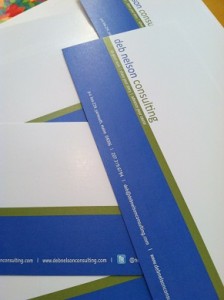Oh my goodness. Did I ever have an eye-opening experience last week. Maine Public Relations Council hosted a media panel discussion for its members featuring three local award-winning journalists. Topics for discussion included best practices for pitching and storytelling. I love to share a good story and wanted to hear what these media reps consider best practices. So, I was off to learn a thing or two.
Call me naïve if you will, but I was not prepared to hear the first panelist indicate that she had NEVER in her career received a pitch from a public relations professional that made her say, “I’m glad that pr person called me.”
I was also not prepared to hear another panelist share her pet peeve: perky twenty-one-year olds calling to ask if she’s received their press releases. I’m certainly not a twenty-one-year old, and I am definitely not perky. So, why would this pet peeve get stuck in my craw and make my blood boil just a bit? Well, think about it. What’s the image that appears in your mind when you hear or read perky twenty-one-year old? For me, it’s a not-so-bright young woman. It’s also a not-so-helpful phrase that shuts down conversation.
Therein lies the surprise learning for me: the level of frustration that both of these women expressed about their interaction with public relations professionals. Day after day this editor’s inbox is filled with press releases that don’t speak to her readers. If that’s not bad enough, the phone call follow-up is the next item on the pr person’s checklist. No surprise here, the editor has deleted the press release and lets the phone call go to voicemail.
To my communications colleagues, it’s now our job to help mend these strained relationships. Each one of us should be looked at as a valuable resource to, rather than a painful thorn in the side of, journalists. Here are a few actions we can take that just might prove helpful:
- If you’re new to the public relations field, find a mentor.
- If you’re an experienced public relations professional, lend a hand to those entering the field.
- Answer two questions before sending your press release: So what? Who cares?
If no one outside the walls of your company cares, chances are it’s not news. Send an email of praise to your co-workers and call it day. - Send newsworthy press releases to the right people, at the right time. EVERY press release is not appropriate for EVERY media outlet. Yes, this means doing some time-consuming homework; your reputation is worth this investment of time.
- When following up with a journalist after sending a release:
Don’t simply ask: Did you get my release?
Ask the question you really want answered: Is this a story you’re interested in covering for your publication/news show/etc.?
If the answer is yes, ask what other information you can provide and how you can be of assistance.
If the answer is no, ask why not? Is it timing, or is the topic not relevant to your audience? That’s how we learn.
And, please, let me not hear the phrase perky, twenty-one-year old again.






